Spring Activities at Oakhurst
Spring is an exciting time - the days are getting longer, the weather is getting warmer, and the wildflowers begin to bloom. As the plants awaken from their slumber, sap begins to flow upwards from the roots, bringing nutrients to the growing tips and emerging buds. This signals the end of the brush cutting season, as applying herbicide to a cut stump is ineffective at this time. So for the next five to six months, we turn our attention to herbacious weed. who can now be controlled during their growing phase.
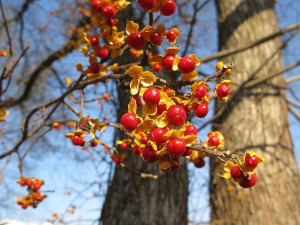
Pull and Cut Oriental Bittersweet
April is dedicated to pulling and cutting the invasive vine oriental bittersweet in an effort to reduce biomass, provide temporary relief to trees and shrubs, and give ephemerals a chance to bloom. As there are often too many stems to treat, this is a solution that requires follow up work in summer or fall, either by repeated cutting or a foliar herbicide application.
Priority workzones: F2.2.1
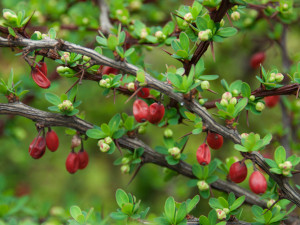
Top Kill Japanese Barberry
In addition to winter stump-treating, a spring campaign of 'top killing' will be performed in order to curtail the population size and prevent barberry from flowering. As barberry leafs out in mid-April, it is easy to spot the green foliage from a distance, allowing a large area to be scouted in a targeted attack. No herbicide is applied at this time, but instead it is allowed to resprout, forcing the plant to draw nutrients from its root reserves. Follow-up work will occur with either a foliar application in summer, or failing that, a fall/winter stump treatment.
Once larger populations are under control, the GPS coordinates will be recorded of scattered colonies so they be located again.
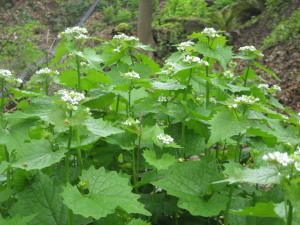
Pulling Garlic Mustard
Spring is the critical time to start pulling this invasive biennial. Garlic mustard will begin to bolt in April, producing white flowers throughout May. Individual plants usually reach one or two feet in height, and uproot fairly easily. As the flowers may continue to produce viable seed, pulled plants need to be bagged and disposed of.
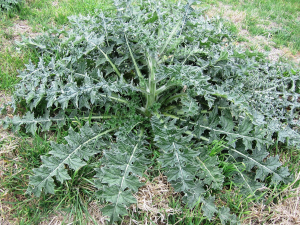
Herbiciding Rosettes
Spring is a perfect time to spray rosettes and other invasive plants before they have a chance to bolt and flower, especially if native plants have yet to emerge. They are also much easier to spot before they are obscured by tall vegetation. Herbicides are most affective when the plants are actively growing, so sunny days when temperatures are above 60°F are optimal. Wind speeds should be low to reduce the risk of drift. Species that can be treated include teasel, burdock, and bull thistle.
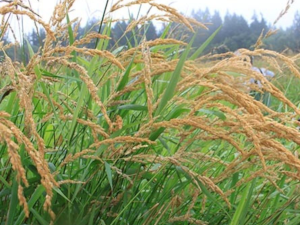
Herbiciding Reed Canary Grass
Reed canary grass is a cold season with two active growing seasons - spring and fall; during the hot months of summer the grass enters a slow or dormant state, by which point it has already finished flowering. Reed canary grass can be treated in April once it has greened and is several inches tall, preventing it from flowering and producing more seed. Preparing an area beforehand by clearing dead vegetation will make it easy to treat the grass.
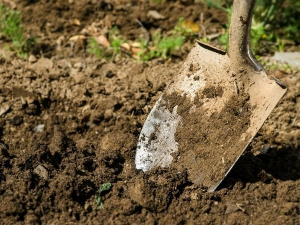
Tree and Shrub Planting
Each year we plant a few trees and shrubs in various locations, usually spots we have been working in over the past year. These shrubs are provided by the Preserve District as part of their Earth Day Tree Planting event.

Dame's Rocket
Often mistaken for phlox, the non-native mustard plant is starting to show its invasive tendencies, and is popping up across the preserve. This biennial or short-lived perennial bolts in May, and flowers in June. Seedheads need to be collected in July and bagged.
Priority workzones: F2.4.4
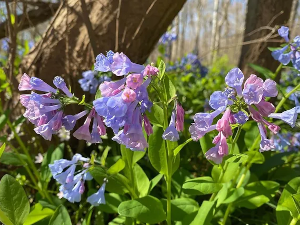
Admiring the Ephemeral Wildflowers
In April, the first woodland ephemerals to begin to bloom - toothwort, spring beauty, bloodroot - so this is a perfect time to relax and enjoy their moment of fame. Their growing period is short, as they must take advantage of the leafless canopy to maximize photosynthesize. Eventually the trees cast them into the darkness, at which point many all already setting seed and preparing to sleep once again.

 Volunteering
Volunteering Safety
Safety Wildlife
Wildlife Newsletter
Newsletter